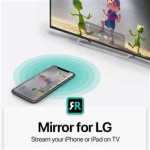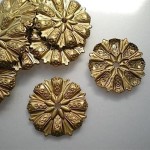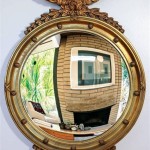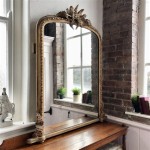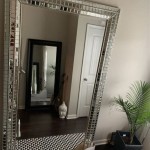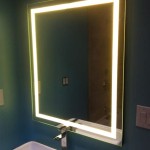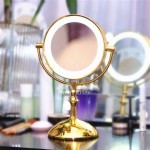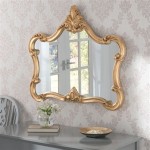How Do I Mirror My iPhone to Laptop Using USB?
Mirroring an iPhone screen to a laptop using a USB connection offers several advantages over wireless methods. A wired connection typically provides a more stable, lag-free experience, crucial for tasks like gaming, presentations, or watching high-resolution videos. Furthermore, USB mirroring often consumes less battery power compared to wireless mirroring, minimizing drain on the iPhone's battery during extended use.
Key Software Solutions for USB Mirroring
Several software solutions facilitate iPhone screen mirroring to a laptop via USB. Choosing the appropriate software depends on the laptop's operating system (macOS or Windows) and user requirements. Some popular options include:
- QuickTime Player (macOS): A native macOS application that supports screen recording and mirroring from iOS devices connected via USB.
- Reflector 3 (macOS & Windows): A third-party application that offers wireless and USB mirroring for various devices, including iPhones.
- LonelyScreen (Windows): A popular Windows-based receiver application compatible with AirPlay, allowing for mirroring via USB connection.
- iTools (Windows): A Windows software suite with diverse functions, including USB mirroring and file management for iOS devices.
- 5KPlayer (Windows/MAC): A Free mirroring tool that can mirror the screen of iPhone to PC/MAC screen.
Mirroring an iPhone to a macOS Laptop Using QuickTime Player
QuickTime Player, a pre-installed application on macOS, provides a straightforward solution for mirroring an iPhone to a Mac. The steps are as follows:
- Connect the iPhone to the Mac using a Lightning to USB cable.
- Open QuickTime Player.
- From the menu bar, select File > New Movie Recording.
- Click the dropdown arrow next to the record button.
- Select the connected iPhone as the camera and microphone source.
- The iPhone's screen will appear in the QuickTime Player window.
Mirroring an iPhone to a Windows Laptop Using Third-Party Software
While Windows doesn't have a built-in equivalent to QuickTime Player for direct USB mirroring, third-party applications bridge the gap, offering similar functionality. The general process involves installing the chosen software on the Windows laptop and connecting the iPhone via USB. Specific instructions vary depending on the application.
- Download and install the desired mirroring software (e.g., Reflector 3, LonelyScreen, iTools, or 5KPlayer).
- Connect the iPhone to the Windows laptop using the USB cable.
- Launch the mirroring software and follow its instructions to initiate the mirroring process.
- Typically, the software will automatically detect the connected iPhone and prompt for permission to mirror its screen.
Troubleshooting Common Mirroring Issues
Occasionally, users encounter issues during the mirroring process. Some common troubleshooting steps include:
- Ensuring the iPhone is unlocked and trusts the connected computer.
- Verifying the USB cable is functional and supports data transfer, not just charging.
- Updating the iPhone's iOS and the mirroring software to the latest versions.
- Restarting both the iPhone and the laptop.
- Checking the software's settings for correct configuration and permissions.
- Trying a different USB port on the laptop.
- Disabling any VPN or firewall software that might interfere with the connection.
Benefits of Using a USB Connection for Mirroring
Using a USB connection for iPhone mirroring offers distinct advantages over wireless alternatives:
- Reduced Latency: USB provides a direct and faster connection, minimizing lag and ensuring smooth screen mirroring, especially for dynamic content.
- Improved Stability: Wired connections are generally more stable than wireless ones, minimizing interruptions or disconnections during mirroring.
- Lower Power Consumption: USB mirroring typically consumes less battery on the iPhone compared to wireless mirroring, extending usage time.
- Enhanced Security: The wired USB connection provides an additional layer of security since data is not being transmitted wirelessly.
Choosing the Right Mirroring Software
Selecting the appropriate mirroring software depends on several factors:
- Operating System Compatibility: Ensure the software is compatible with the laptop's operating system (macOS or Windows).
- Features: Evaluate the software's features, such as screen recording capabilities, resolution support, and customization options.
- Ease of Use: Choose software with a user-friendly interface and intuitive controls.
- Cost: Consider whether the software is free or requires a purchase and evaluate its value based on needs and features.
Optimizing the Mirroring Experience
Several practices can optimize the iPhone mirroring experience:
- Close Unnecessary Applications: Closing unused applications on both the iPhone and the laptop can free up resources and improve performance.
- Adjust Screen Resolution: If necessary, adjust the mirroring resolution in the software settings to balance quality and performance.
- Disable Notifications: Disabling notifications on the iPhone can prevent interruptions during presentations or demonstrations.
- Use a High-Quality USB Cable: A high-quality USB cable can ensure a stable connection and optimal data transfer speeds.

Best Ways To Screen Mirror Iphone Pc Via Usb Cable

How To Mirror Iphone Windows Pc Laptop Mac Full Guide

How To Mirror Iphone Pc Via Usb 4 Proven Ways Solo Net

4 Ways How To Mirror Iphone Pc Via Usb Airdroid

Best Ways To Mirror Iphone Pc Via Usb Without Wifi

How To Mirror Iphone Windows Pc Laptop Mac Full Guide

4 Ways How To Mirror Iphone Pc Via Usb Airdroid

How To Mirror Iphone Windows Pc Laptop Mac Full Guide

Best Ways To Display Iphone Screen On Pc Via Usb

How To View Android Iphone Screen On Pc Via Usb Airdroid

